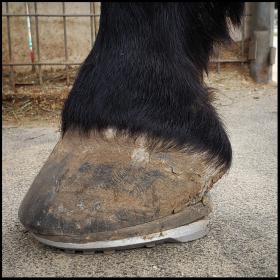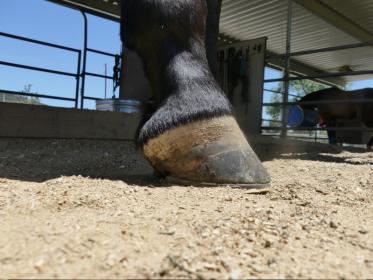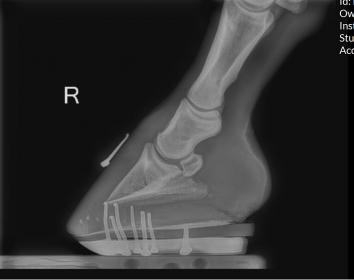I have a horse with nightmare low heel long toe issues. Some is confirmation and some was trimming. Did the pad and wedge route. Ended up with a suspensory tear. Could never ever get her sound in the following 8 months.
I brought her home, got a new farrier and vet. When the team came out she was probably a 3/4 lame in front. X-rays showed massively negative Palmer angle, but ok sole depth, which was surprising. I couldn’t take her barefoot without causing a ton of other issues. Ended up putting her into epona shoes and the farrier used the glue to build up the shoe like a wedge. We shod every 4 weeks with new x-rays for each trim and set for about 5 rounds. We used casts over the eponas before we could use nails.
As time went by, it was amazing to see the hoof remodel because it had more flex and all the apparatus were able to work, weight, and pump blood. As time went on the amount of glue wedge reduced and is minimal now. She is sound now… well sound for her which is serviceably sound with a .5/1 lameness she works out of in about 15 minutes of a long walk and canter set.
palmer angles are spot on, she has heels, great sole depth. I x-ray every 6 months just to make sure we are staying the course. For her, she is going to stay in eponas because no matter what we can’t keep her sound with metal shoes. This horse just needs this package. I believe whatever keeps an individual horse sound is the way to go and this mare is just a special one…
if given the choice, I’m not sure I’d do wedge pads again even though I know they help a ton of horses. For mine, they crushed the heels more than they grew them. If I understand my farrier correctly, one still has to leave more toe if nailing for a safer margin of error than what we were able to do with the epona/synthetic shoes. That mattered with this horse. Again, she is special and super sensitive. Needs a 5 week max trim and sometimes four depending on the time of year. Six weeks erases any good from the last month and sets her back in growth and angle.
I’m not an expert in anything. Just an owner who tried everything (steel, aluminum, leather pads, rim pads, wedges, impression under pads, packing, roller shoes, natural balance shoes) and didn’t believe my horse was a pasture puff at 13. I’d sold a house and had cash to throw at it. I also have a farrier who is a huge geek and loves to measure everything. Lol.
you have some great info from the responses so far.
Good luck!



